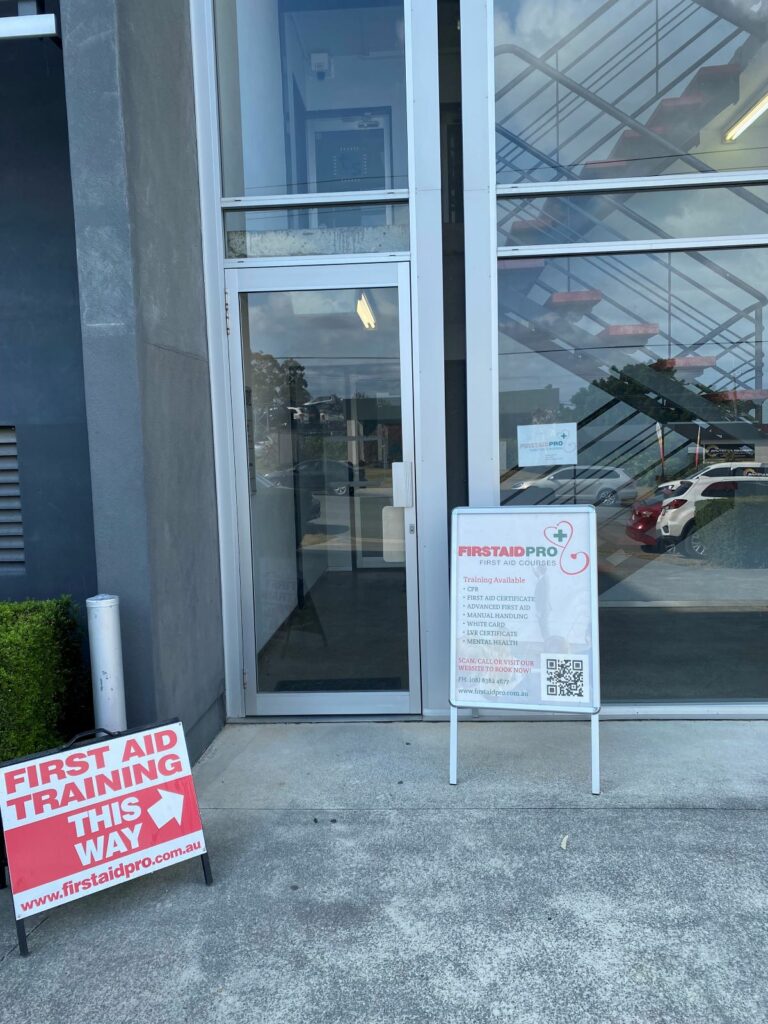Introduction
In times of emergency, the capability to carry out Cardiopulmonary Resuscitation (MOUTH-TO-MOUTH RESUSCITATION) can be the distinction in between life and fatality. In Australia, recognizing the CPR qualification requirements is important for any individual wishing to end up being a qualified rescuer. This comprehensive overview will delve into what you require to know about mouth-to-mouth resuscitation certification in Australia, consisting of training options, credibility of certificates, age-specific standards, and more.
CPR Accreditation Demands in Australia: What You Required to Know
What is CPR?
Cardiopulmonary Resuscitation (MOUTH-TO-MOUTH RESUSCITATION) is an emergency situation procedure performed when someone's heart stops beating or they quit breathing. It integrates upper body compressions with rescue breaths to keep blood circulation and oxygenation till professional medical aid arrives.
Why is mouth-to-mouth resuscitation Important?
The vital value of mouth-to-mouth resuscitation can not be overemphasized-- it conserves lives. According to stats from the Australian Resuscitation Council, prompt CPR can double or triple a victim's possibility of survival after cardiac arrest.
Understanding CPR Certification
To end up being accredited in CPR, individuals have to go through training with recognized companies. Qualifications generally consist of hands-on abilities practice and academic expertise concerning cardiac emergencies.
Types of CPR Educating Available
Basic Life Assistance (BLS) vs. Advanced Life Assistance (ALS)
- Basic Life Support (BLS) focuses on essential methods including chest compressions and rescue breaths. Advanced Life Support (ALS) covers extra complicated procedures such as innovative respiratory tract management and drug administration.
Online vs. In-Person Training
- Online CPR certification offers versatility yet may do not have hands-on experience. In-person classes supply functional skills practice important for efficient feedback in emergencies.
CPR Qualification Process
Choosing a Training Provider
When seeking training, ensure that your selected company is approved by respectable organizations like the Australian Resuscitation Council or St John Ambulance.
Course Duration and Content
Most standard courses last regarding 4 hours and cover:
- Adult mouth-to-mouth resuscitation techniques Use of Automated External Defibrillators (AED) Recognition of heart attack signs
CPR Certificate Validity
How Long Does a Mouth-to-mouth Resuscitation Certificate Last?
Typically, a CPR certification continues to be legitimate for 3 years prior to needing renewal. It is vital to stay updated with the latest methods and guidelines.
Renewing Your Certification
Renewal typically entails taking a correspondence course that takes another look at vital abilities and updates guests on any kind of adjustments in guidelines.
Age-Specific CPR Standards Australia
Adult vs. Youngster vs. Infant CPR Techniques
Different age groups call for customized techniques:
- For grownups, concentrate on compression deepness and rate. For children, readjust compression deepness based upon size. Infant mouth-to-mouth resuscitation technique includes gentle compressions and cautious ventilation.
Infographic: Age-Specific Techniques
|Age Group|Compression Deepness|Ratio|| -----------|-------------------|-------|| Adults|5-6 centimeters|30:2|| Kids|4-5 centimeters|30:2|| Infants|1.5 centimeters|30:2|
CPR Devices in Australia
Essential Equipment for Effective Response
Having access to proper CPR equipment help effective resuscitation efforts:
AEDs Pocket masks GlovesUsing AED with mouth-to-mouth resuscitation in Australia
An Automated External Defibrillator can dramatically boost survival rates when made use of together with CPR-- knowing just how to use an AED effectively is important for every single rescuer.
Common Myths Concerning CPR
The Misconception of "Mouth-to-mouth Resuscitation Always Restarts Heart"
Many believe that performing CPR will constantly reboot a heart; nonetheless, this is misleading-- mouth-to-mouth resuscitation maintains blood circulation up until specialist assistance arrives but does not ensure revival.
Debunking Other Misconceptions
Other misconceptions consist of misunderstanding compression deepness or the effectiveness of rescue breaths versus hands-only approaches; education and learning plays an essential function in resolving these falsehoods.
Special Situations in Doing CPR
CPR for Sinking Victims
Drowning victims frequently require immediate rescue breaths as a result of their unique scenarios; recognizing this context enhances results significantly.
Sports-Related Cardiac Arrest Procedures
Recognizing signs specific to athletes aids -responders act quickly-- education and learning pertaining to sports-related heart incidents is imperative for trainers and trainers alike.

Workplace Emergency Plans
Establishing Readiness at Workplaces
Every work environment should have a comprehensive emergency strategy that includes arrangement Gold Coast first aid certificate for first aid training like cpr and first aid combo courses for employees.
Training Staff members Effectively
Regular training sessions make sure team are prepared-- not just does this safeguard employees yet likewise enhances total workplace security culture.
Frequently Asked Questions (FAQs)
Q1: Just how do I find regional CPR classes?
A1: Local recreation center or healthcare facilities typically offer classes; web sites of organizations like St John Rescue supply listings as well.

Q2: Can I get my accreditation online?
A2: Yes! Lots of approved companies supply online mouth-to-mouth resuscitation certification, but ensure it consists of hands-on method elements as well.
Q3: Is there a distinction in between adult and kid certifications?
A3: Yes! Programs specifically tailored for infants and children concentrate on age-specific strategies which vary from those instructed for adults.
Q4: Just how typically must I restore my certification?
A4: Usually every 3 years; nevertheless, staying upgraded each year with refreshers is very advised given progressing guidelines.
Q5: Exist any details laws pertaining to obligatory training?
A5: While regulations may differ by state or region, numerous workplaces are called for by law to have trained very first -responders readily available on-site during working hours.
Q6: What statistics support the efficiency of CPR?
A6: Researches show that prompt bystander-administered mouth-to-mouth resuscitation can increase survival rates from heart attack dramatically-- frequently doubling opportunities of client healing compared to no treatment at all.
Conclusion
Understanding the ins and outs of the CPR qualification demands in Australia encourages individuals across various fields-- from healthcare experts to daily residents-- to act decisively during emergency situations. With appropriate training, awareness of age-specific First Aid courses Gold Coast standards, understanding regarding tools such as AEDs, and experience with typical myths bordering resuscitation efforts, one can genuinely make a distinction when it matters most. Whether you're considering registering in neighborhood classes or exploring on-line options like online cpr certification, keep in mind that each action taken towards coming to be qualified contributes toward saving lives-- an honorable quest indeed!